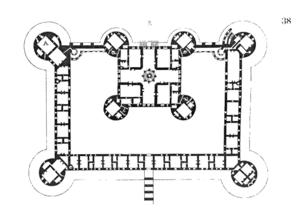The title of this post is a little misleading in that, technically speaking, it was our third day since coming to Paris. However I think of it as Paris Day 2 because it was the second day we actually spent in Paris. It was also the last full day of our trip.
We started once again with the Arc de Triomphe and luckily it was much sunnier.
 |
| Arc de Triomphe in the sun |
 |
| Eiffel tower as seen from the top of the Arc de Triomphe |
 |
| Montmartre and the Basilique de Sacre-Coeur |
 |
| La Tour Eiffel |
Then we decided to go over to the Basilique de Sacre Coeur. Montmartre is the hill it is on, by the way. This was a mistake. When I went last time, it was morning and there was no one around. The place was really truly deserted. Not this time. So many people. You could barely get up to the basilica and then there were even more people there. It was so crowded. It's beautiful, and when there aren't so many people the views are great. Moral of the story: don't go to Montmartre on a Saturday afternoon.
We had a nice quiet dinner and then we settled in for the night, our last night in Paris. The next morning it would be back to Caen for me, and back to the states for them. All in all a great trip.
















































